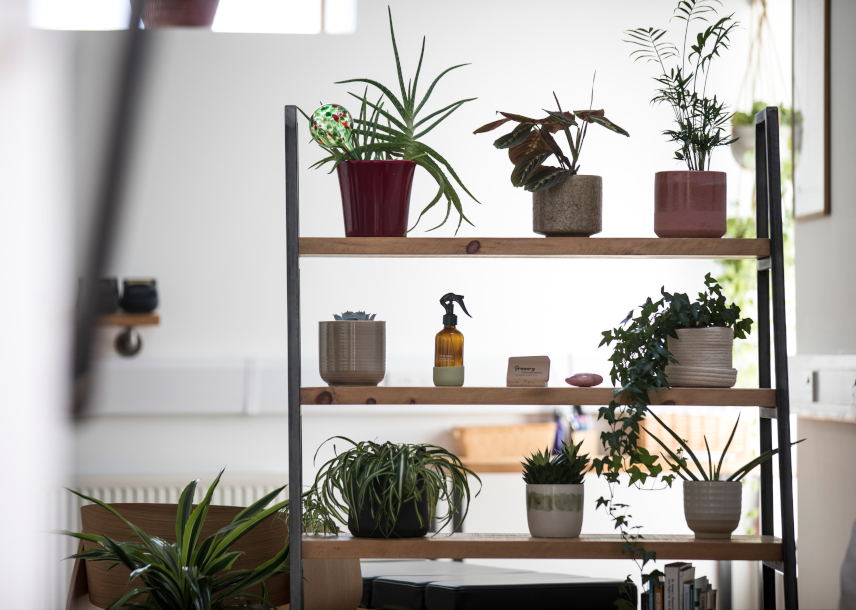
Making Healthy Easy, Affordable and For The Planet
In another article (How To Eat a Plant-Based Diet) I talked about why we should take care of ourselves and why eating more plants and nourishing our minds and bodies makes a difference to our overall wellbeing. Here I wanted to talk about the how; how to make eating well a little easier, how to do it on a budget, how to cut down on food waste and how to eat more seasonally. Here are some tips and tricks to make a healthy lifestyle a little more sustainable and enjoyable.
For the planet
It has become clearer in the past few years that we are facing a climate emergency and that one of the easiest ways to make a positive impact is by changing our diets. It has been suggested that the single biggest way to reduce your impact on the earth is with the power of vegetables. Agriculture is one of the most polluting industries on the planet, and the meat and dairy industries produce about 60% of agriculture’s greenhouse gas emissions. Believe it or not the meat and dairy industries create more greenhouse gases than the transport industry. If the world ate more plant-based, we could even plant trees on the farmland that was no longer needed.
Do we have to go fully plant-based to get the benefits? I know that this would be a massive ask and a lot of people are not a huge fan of making such sweeping changes overnight. I also think that things like this often need to be gradual so that they are not overwhelming. The good news is that you can still have a huge positive impact on the planet by switching to a flexitarian diet (following a semi-vegetarian diet, not permanently excluding any meat or fish but with many of your meals being focused on plants). I think this is exciting as it feels a little more doable and it is something we could start to do right now.
One of the negatives that I often hear about healthy eating is that it is expensive. Plant-based eating has become linked with super foods, fancy powders and hard to get ingredients. This can be off putting for some and totally out of the realms of affordability for others. However, cooking nutritious, plant-based meals doesn’t need to be expensive, especially not your everyday recipes and weeknight staples. It is about choosing your recipes and making staples like lentils a big part of your shopping list. Here are a few tips, because removing cost as a barrier is important if we want to change the way we are eating as a society:
- Stock your cupboard with staples, it makes a huge difference. You can buy them in bulk which means that you are ready to go when you get home from work, you just need to stop and pick up a couple of fresh ingredients. The easier it feels to make a recipe the more likely you are to make it. If I know that all I need to buy is onion, garlic and spinach then I’m much more likely to stop, buy them and cook from scratch.
- Focus on ingredients like beans and pulses, which are relatively cheap, easy to cook with and easy to get hold of. They are also really filling, as they are full of both fibre and protein, so you can make them the centre of a healthy, balanced meal. These kinds of recipes are also ideal for batch cooking and freezing, which cuts down on food waste as you can use a whole bag of carrots, spinach etc and you can make extra so that each meal goes a little further, saving you time and energy later in the week. I do a lot of batch cooking and swear by it.
- Shopping seasonally helps, but I know that is often easier said than done and may depend on the shops or markets that you have access to.
- Buying frozen berries, frozen spinach and other frozen vegetables makes a big difference. Not only are they normally cheaper, but they also make healthy eating easier as you can stock your freezer with them and know that you have always got them ready to go.
Here are some of my kitchen staples:
- Dried lentils, pasta and rice.
- Cartons of oat milk and tubs of coconut yogurt.
- Tins of chopped tomato’s, coconut milk, chickpeas and various types of beans.
- Dried herbs and spices.
- Tahini, almond butter, various seeds.
- Olive oil, apple cider vinegar, balsamic vinegar, vegetable stock cubes, tomato purée, miso paste and maple syrup.
- Coconut oil, dark chocolate, dates, chia seeds, cocoa powder, bicarbonate of soda, baking powder, oats, buckwheat flour, spelt flour and various types of nuts.
Avoiding waste
The other thing that makes a big difference, both to our wallets and the environment is using our leftovers. The statistics around food waste are terrifying, right now, a third of all food produced around the world goes to waste, what’s more, we’re using an area roughly the size of China and 25% of the worlds freshwater supply to grow the food that goes straight into the bin!
It is easy to dismiss the problem as something that happens in shops and restaurants, but sadly that’s not the case at all. In most developed countries, over half of all food waste is happening at home and in UK households we throw away around twenty-five million slices of bread, six million potatoes and over a million bananas everyday.
We all want to stop climate breakdown and make a difference, and avoiding food waste is one of the easiest, most straight forward things that we can do. We can simply take control of what we buy and how we use it so that we never throw anything away again. If we all did this and moved to a largely plant-based diet, we could make a shift that would help protect the planet for our future. Here are some ways that I avoid food waste:
- I freeze left over food. For example, frozen ripe bananas make yummy smoothies or ice cream. If I have left over stew, curry or soup, I freeze it in batches, portioning it out and letting it cool before popping it in the freezer.
- Adapt recipes. Lots of recipes can be added to or adjusted easily to use left-over odds and ends in the fridge, like a spare carrot or potato. I find stews, soups and curries are the best place to sneak in left over veg. For example, vegetable noodles could contain just about any vegetables from cauliflower to green beans, kale, peppers, celery and so much more.
- Try turning your left-over vegetables into dips or sandwich fillings, if you make an excess of hummus for example, then use it in a sandwich the next day or add it to a packed lunch with carrots to dip in it.
- Shopping at a local greengrocer can also help since you don’t have to buy a big bag of vegetables when you only want two carrots or one potato. This doesn’t have to be fancy or expensive, just smaller scale producers where you can buy single, seasonal ingredients.
Eat seasonally
Eating seasonly if you are able, can also taste better, be a little cheaper and a little more sustainable.
For example, In the summer tomatoes, courgettes, aubergines, cucumber, berries and french beans are all in season and taste extra delicious. In autumn mushrooms, squash, apples and pears are all in season. In winter why not try beetroot, cauliflower, celery, potatoes, kale, brussel sprouts and parsnips. In spring it is all about broccoli, lettuce, rocket, spinach, carrots, asparagus and fresh peas (often these spring vegetables taste even better straight from the plants if you are lucky enough).
So why not give plant-based eating a try and help protect the planet while you are doing it.
Love Kat, x


